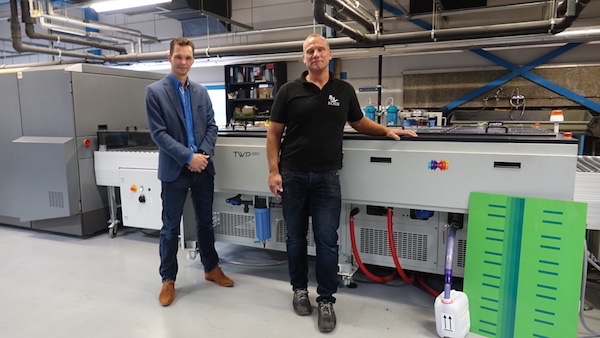CTP - Computer to Plate
Rodi Rotatiedruk chooses Toray for improved print quality, productivity

Friday 15. December 2017 - IMPRIMA Plates and TWP-1250 plate processor deliver waterless printing benefits for Dutch company
Toray Graphics in the Czech Republic, a leading manufacturer of waterless offset plate technology, today reported that Rodi Rotatiedruk, a specialist in providing advertising opportunities designed to reach specific target audiences, has chosen Toray IMPRIMA waterless plates for its Koenig & Bauer Cortina presses. The company has also installed a Toray TWP-1250 plate processor to replace an older, less reliable competitive unit. Based in the Netherlands, Rodi Rotatiedruk prints free weekly newspapers from its own publishing house Rodi Media, and produces custom newspapers or magazines that promote a product or company. Rodi Rotatiedruk delivers high quality print and also offers distribution services to more than 900,000 Dutch households through their own distribution company Rodi Verspreiding.
“Despite the fact that the newspaper business as a whole is consolidating,” said Dick Ranzijn, Technical Director at Rodi Rotatiedruk, “we still see growth in our diversified offerings. In order to support our growth strategies, we needed to increase our print quality and expand our capacity. We are proud to have been the first company in the world to acquire a Koenig & Bauer Cortina waterless offset press in 2003. And we are equally proud to be first in the world to acquire a Toray TWP-1250 plate processor with Toray IMPRIMA waterless plates. We are so pleased with the performance of the TWP-1250 plate processor, and so confident in our ability to continue our growth, that we are looking to add two more systems in the future!”
The Toray TWP-1250 waterless plate processor builds on more than 25 years of experience in manufacturing processors and ancillary equipment. It has been designed specifically to provide the optimum plate clean-out for consistent, reliable, high quality results, plate after plate. It is fully compatible with Toray waterless plates, it features fully automated operation and can be connected to water recirculation units to minimize water usage. Platesetter interfaces for major manufacturers are available.
Rodi Rotatiedruks growth has been driven in part by the unique characteristics offered by waterless printing from Toray and Koenig & Bauer. These include:
High quality printing, with better quality and depth of color than can be achieved by conventional printing technologies;
A smaller environmental footprint than with conventional wet offset printing, including the ability to reduce waste paper and to significantly reduce VOC emission in the printing house;
The ability to produce a wide range of high-quality applications, from newspapers to magazines, flyers, leaflets and more; and
Exceptional customer care and confidence in future support in a world where the number of reliable suppliers is also consolidating.
“The ability to acquire hardware, plates and chemistry from a single, reliable source gives us peace of mind, Ranzijn added. “We see a bright future for print, and being able to count on partners like Toray is a critical element of our ability to continue growing.”
“We have been providing waterless plates to Rodi Rotatiedruk since the acquisition of its first Cortina press,” said Mitsunori Hayashi, General Manager Sales Department, Graphics Division. “And we have been working closely with them since then to continue to improve our offerings. Their valuable contributions have helped us make the TWP-1250 a best-in-class processor. Our IMPRIMA plates have also contributed to Rodi Rotatiedruks ability to continue to boost quality for its advertising customers.”
Why Waterless Offset?
Not to be confused with dry offset printing, waterless offset is an attractive alternative to the flexographic printing process for short and medium run applications because of the lower print form preparation cost. In addition, the companys IMPRIMA line of waterless offset printing plates provides superior printing results on a wide variety of paper stock and non-absorbent substrates such as foils and synthetic materials. Waterless offset printing not only conserves water, but also reduces waste and eliminates the need for toxic chemicals in the printing process.
